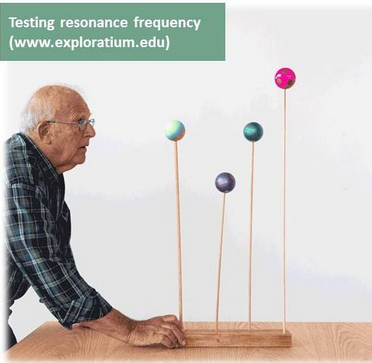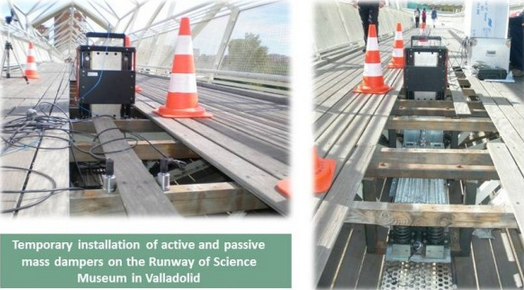Despite the title, this blog is not about ballroom dances, but about something related to movement and how to guide your dance partner.
Have you ever felt how a footbridge sways when you walk over it or how a stadium stand vibrates under your feet when you are jumping and cheering up your favorite football team? If not, I highly recommend you to see these videos: Millenium Bridge London, Commerzbank-Arena Frankfurt or Volga Bridge Volgograd.
Why do these structures sway if they are building with strong and rigid materials like concrete or steel? In general, all structures vibrate in response to external excitation like people, vehicles or wind gust, but some structures sway more perceptible than others.
Structures perform more or less amplitude oscillations depending on their stiffness, mass and damping parameters. As a rule of thumb, the more slender, the more sensitive to develop noticeable rocking motions and even ones annoying and dangerous for people.

The best way to understand these concepts is by testing. If you are at home, I encourage you to go to the kitchen and take some spaghetti noodles and strawberries. Also you can use small balls made with a putty-like modelling material like plasticine® instead of the fruit. Now, hold tightly one end of a noddle and pierce a strawberry/plasticine® ball in the opposite end. Then, make small back and forth movement with your hand.
Changing the frequency of the movement you realize that the noddle performs big oscillations and even is broken at a particular rate. This frequency is called resonance frequency and is defined by the noddle flexibility or “stiffness” and the strawberry/plasticine® weight or “mass”. If now you try with two noodles instead of one and later you use a heavier or lighter strawberry, you will perceive how the resonance frequency changes, being lower as long as you have lower stiffness and/or bigger mass.
With regard to damping, this property is related to the material used and basically it opposes to the movement. In other words, the more damping, the lower oscillations will be developed at the resonance frequency and the vibration will stop sooner once the excitation is ceased. This can be checked using a steel wire instead of the spaghetti. You notice the spaghetti damping is higher however it is more fragile than steel.

Coming back to structures, these ones are designed and built using different materials and geometries. Therefore they have different mass, stiffness and damping values and consequently different resonance frequencies. What would happen if one of the footbridge resonance frequencies was closed or the same to the people pacing rate crossing over it? As we saw in the experiment, the footbridge would sway perceptibly with lower or bigger oscillations depending on the damping. With a very low damping value, the oscillations performed would be so big that the structure must be closed to be modified. This was what happened three days after the London Millenium Bridge opening day.
Basically, there are two solutions to avoid noticeable vibrations in a structure. The first one would be modifying its resonance frequency changing its stiffness and/or mass. The second one would be based on adding damping to the structures. The first solution is in general expensive and would modify the final structure design becoming less slender what usually dislike the structure designer/architect. The second solution would be more affordable and unnoticeable. It would consist on adding damping devices along the structure in order to increase the structure global damping. Some examples of these devices are oil dampers and viscoelastic dampers. To work properly, these devices need to link two points of the structure with relative movement.

Other damping systems in what CARTIF has been working for years are the “Tuned Mass Dampers” or TMD. These systems consist on a mass attached to the structure by means of coil springs or metallic cables (pendulum TMD) and passive damping devices like oil dampers and neodymium magnets or active ones like magnetorheological dampers.
These systems only need to be attached to one point of the structure, being generally the one with the biggest oscillations. Its functioning principle is based on kinetic/inertial energy transference between the structure and the TMD. An example of these systems is the one recently installed in the second world tallest building, the Shanghai Tower, where a 1000 tons pendulum TMD drastically reduces the skyscraper oscillations in response to wind loads.
Summarizing, in spite of the fact that structures sway, it is always possible to “guide” them to gentle movements by means of damping system such as Tuned Mass Dampers.
- LASER: from death ray to the swiss knife of technology - 5 January 2024
- The century of the photon - 1 October 2021
- Guiding dancing structures - 7 July 2016
